Inside The New York Botanical Garden
Programs and Events
Posted in Exhibitions, Programs and Events, Science on January 21 2009, by Plant Talk
 |
Nick Leshi is Associate Director of Public Relations and Electronic Media. |
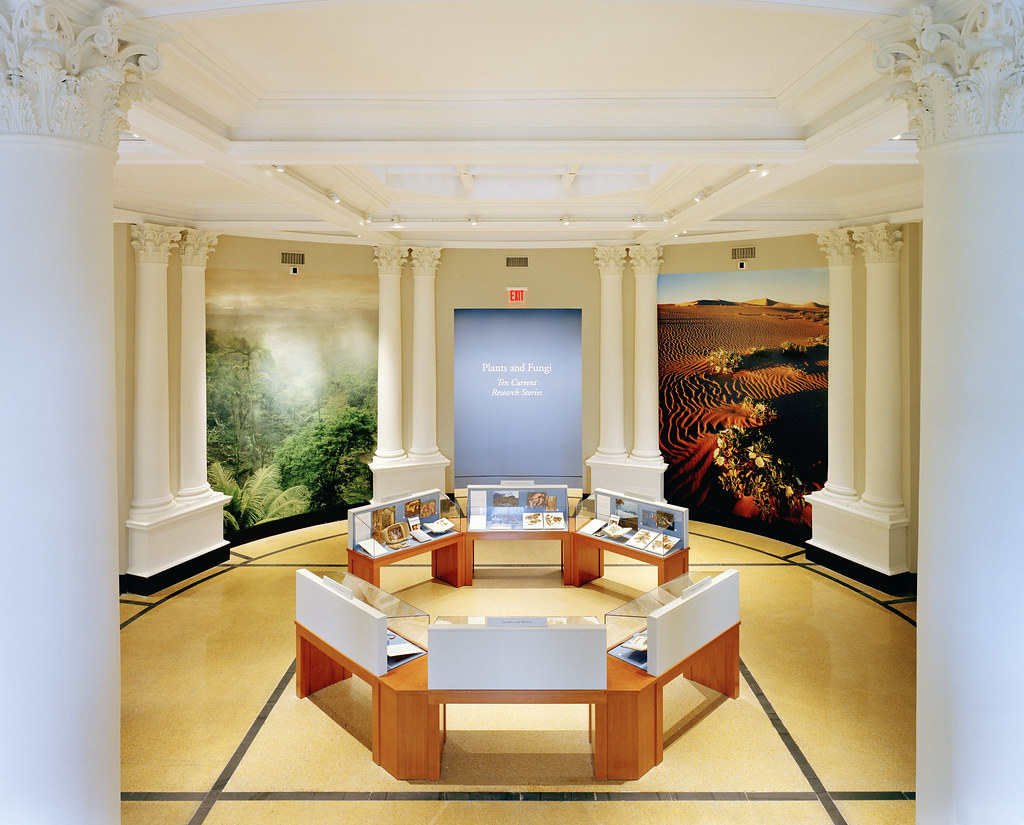 When I talk about The New York Botanical Garden, one phrase I tend to repeat over and over is: “No matter what the weather is like outside, there is always something to see and do here, both indoors and out.” In addition to the beauty of the Garden’s grounds and living collections in every season, there are also great indoor attractions. One of my absolute favorites is located on the fourth floor of the Library building—the permanent exhibition Plants and Fungi: Ten Current Research Stories.
When I talk about The New York Botanical Garden, one phrase I tend to repeat over and over is: “No matter what the weather is like outside, there is always something to see and do here, both indoors and out.” In addition to the beauty of the Garden’s grounds and living collections in every season, there are also great indoor attractions. One of my absolute favorites is located on the fourth floor of the Library building—the permanent exhibition Plants and Fungi: Ten Current Research Stories.
The exhibition, housed in the grand Britton Science Rotunda and Gallery, allows visitors to explore the important research being conducted by Botanical Garden scientists here in the Bronx and around the world. Massive mural images of the Garden’s founders, Nathaniel Lord Britton and Elizabeth Knight Britton, overlook a map showing the corners of the world where our scientists have traveled for field research to solve some the mysteries of nature and to better understand the role of plants and fungi in our lives, part of the Garden’s overall mission as an advocate for the plant kingdom.
 The rotunda features multiple displays illustrating the “William C. Steere Tradition,” with information on mosses, lichen, and three panels on mushrooms and berries. It educates the public on the legacy and influence of the man for whom the adjacent William and Lynda Steere Herbarium is named and where over 7 million plant and fungi specimens are archived. Computer terminals in the Gallery allow visitors to access the online specimen catalog from the C.V. Starr Virtual Herbarium.
The rotunda features multiple displays illustrating the “William C. Steere Tradition,” with information on mosses, lichen, and three panels on mushrooms and berries. It educates the public on the legacy and influence of the man for whom the adjacent William and Lynda Steere Herbarium is named and where over 7 million plant and fungi specimens are archived. Computer terminals in the Gallery allow visitors to access the online specimen catalog from the C.V. Starr Virtual Herbarium.
Other computer stations in the exhibition provide audio-video presentations explaining Garden scientists’ research on rice, cycads, brazil nuts, squashes, ferns, and vanilla orchids. Visitors young and old can see how modern tools such as DNA fingerprinting as well as classic techniques of plant exploration are used, and how scientists are studying vital topics like genetic diversity in rice and a nerve toxin in cycads that may provide insight into neurological diseases.
You can meet some of the scientists in person and hear them discuss their research as part of the 2009 Gallery Talks series Around the World with Garden Scientists in the Britton Science Rotunda and Gallery. Robbin Moran, Ph.D., kicks off the series this Saturday, January 24, at 1 p.m. with his presentation “The Fascinating World of Ferns” and provides a behind-the-scenes tour of the Herbarium.
Posted in Exhibitions, Programs and Events on January 16 2009, by Plant Talk
The Legacy of George Washington Carver
 |
Dachell McSween is Publicity Coordinator at The New York Botanical Garden. |
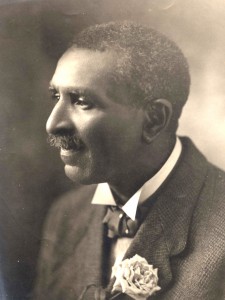
One of my favorite times in the Garden is in January. Yes, I know it is cold outside and it gets dark early, but I look forward to seeing The Life and Work of George Washington Carver exhibit and program in the Everett Children’s Adventure Garden. This fun and informative exhibit looks at the life of George Washington Carver, the renowned plant scientist who created hundreds of uses for peanuts, soybeans, and sweet potatoes.
Dr. Carver was born to slave parents in Diamond Grove, Missouri, in 1864. As a child, he developed an early interest in plants. In fact, he became known as the “plant doctor” for helping neighbors and friends with ailing plants. He learned to read, write, and spell at home, because there were no schools for blacks in his hometown. In 1891 he became the first black person to enroll at Iowa State College of Agriculture and Mechanic Arts, known today as Iowa State University. After completing his Bachelor’s Degree in 1894, Dr. Carver’s professors encouraged him to stay on as a graduate student. He became known for his excellence in plant breeding and was appointed to Iowa State’s faculty, becoming its first black faculty member.
The exhibit in the Children’s Adventure Garden makes me appreciate all of Dr. Carver’s vast accomplishments. I enjoy seeing children transform into “plant scientists” by putting on lab coats and picking up a magnifying glass to diagnose and remedy sick plants, just like Dr. Carver did as a child. The children also create a personal science timeline, plant a soybean to take home, and enjoy stepping into the interactive yellow replica of Dr. Carver’s Jesup wagon, which he used as a traveling school to help spread his agricultural knowledge to farmers and homemakers. The wagon was named after Morris K. Jesup, a New York financier and philanthropist.
As we look forward to celebrating Dr. Martin Luther King Jr. Day and the inauguration of America’s first black president, it is inspiring to see children get excited about this remarkable program that encourages them not only to learn about plant science, but also to dream big and impact the world, just like Dr. Carver did.
Check out Saturday’s programming
Check out Sunday’s programming
Posted in Programs and Events on January 7 2009, by Plant Talk
 |
Samantha Buck is an Interpretation Intern for Public Education. |
 On my second day as an intern with The New York Botanical Garden, I had the esteemed pleasure of meeting Sir Topham Hatt and Thomas the Tank Engine™ from the Island of Sodor (both of whom were much larger than I remembered from watching the television show as a child). The excitement was palpable as a growing number of fans arrived in the Arthur and Janet Ross Lecture Hall, the majority of whom toted small children anxious for the experience.
On my second day as an intern with The New York Botanical Garden, I had the esteemed pleasure of meeting Sir Topham Hatt and Thomas the Tank Engine™ from the Island of Sodor (both of whom were much larger than I remembered from watching the television show as a child). The excitement was palpable as a growing number of fans arrived in the Arthur and Janet Ross Lecture Hall, the majority of whom toted small children anxious for the experience.
I carefully folded the gray and white paper conductor’s hat that was presented to me, pulled the elastic around my head, and was ready for my adventure! As I was greeted by the silently enthusiastic Sir Topham Hatt, visitors settled in to watch an episode or two of Thomas & Friends, who came to life on the big screen. Following the film, some in the audience went forward to meet Sir Topham Hatt. It was refreshing to see the youngsters interacting with him so animatedly.
I got the royal treatment: becoming an honorary engineer so I could “help Thomas and his friends out if they were ever in trouble.” Younger “engineers” were also presented with coloring pages of Thomas, James, Percy, and Gordon, along with a box of crayons and stickers depicting other favorites. And of course, no visit to this event would be complete without a photo with Thomas the Tank Engine™ himself, happy and eager as ever to meet each and every one of his fans.
Come visit Thomas the Tank Engine™—he’s here through January 11.
Posted in Learning Experiences, Programs and Events on December 17 2008, by Plant Talk
 |
Jeff Downing is Vice President for Education. |
When I was a kid growing up in rural Newtown, Connecticut, my best friend, Cliff, and I climbed trees. We were good. We could shimmy, twist, and scamper our way to the highest branches that would support our meager weight. From there, we would survey the neighborhood like forest rangers as the treetop swayed. (We never understood why our moms cried in horror whenever they discovered us happily perched 30 feet above our roofs.) Those were the days.
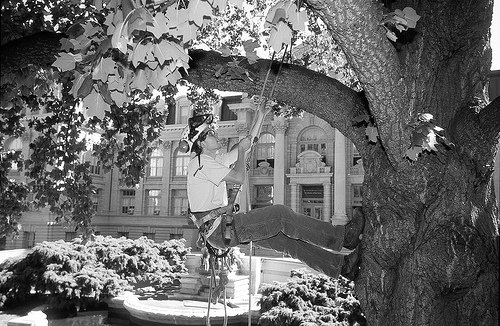 If someone had told me then that you could actually make a career out of climbing trees, I would have said, “Where do I sign up?” And now, when I speak with passionate recreational gardeners about the frustrating shortage of skilled horticulturists, many respond with similar wide-eyed surprise: “You mean I could do this for a living?”
If someone had told me then that you could actually make a career out of climbing trees, I would have said, “Where do I sign up?” And now, when I speak with passionate recreational gardeners about the frustrating shortage of skilled horticulturists, many respond with similar wide-eyed surprise: “You mean I could do this for a living?”
But the fact is that arborists and horticulturists of every description are truly in demand, and have been for some time. Botanical gardens, municipal parks departments, estate managers, and landscape design/building firms all lament the shortage of trained professionals, from entry level gardeners to horticulture directors and executives. And the best I can figure, it is largely for lack of public awareness that these career tracks actually exist!
The New York Botanical Garden’s Continuing Education program and School of Professional Horticulture have trained generations of the world’s finest horticulturists for over 80 years. Now, certificates are offered in seven disciplines, including horticulture, landscape design, floral design, and horticultural therapy.
But in this economy, will there be jobs? I can’t tell the future, but I know the history—too few trained professionals for too long. And I know the present—trees still need to be pruned, gardens still need love and care. Look up the New York City Parks Department’s Career Opportunities, for just one example. Then go to our Continuing Education Web page and register online for an introductory class (or call us at 1-800-322-NYBG for guidance). The Garden’s classes are like potato chips: I bet you can’t take just one.
Posted in Learning Experiences, Programs and Events, Wildlife on December 12 2008, by Plant Talk
Here’s What You May See on the Tally
 |
Debbie Becker leads a free bird walk at the Garden every Saturday from 11 a.m. to 12:30 p.m., beginning at the Reflecting Pool in the Leon Levy Visitor Center. Join her tomorrow, December 13, for the 2008 New York Botanical Garden Bird Count.
|
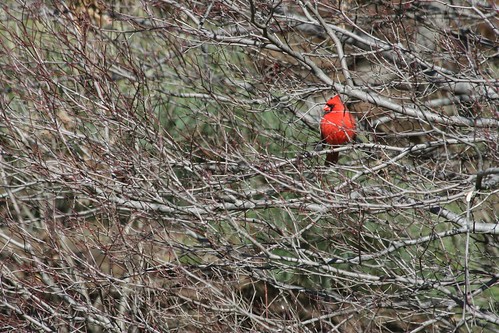 Every year at this time, birders flock to the parks and woods across the country and beyond for National Audubon Society’s annual Christmas Bird Count. From dawn’s early light until dusk birders count all the birds they can find using a specific method and within precise geographic areas. At the end of the day the counts are tallied and compared to numbers from previous years. The information is used to determine if a bird species is in trouble or declining. Past revelations included lower than usual numbers of house finches, most likely due to conjunctivitis, and decimated crow numbers, presumably due to West Nile Virus. Occasionally, a rarity will pop up on the count as birders scour the shorelines, forests, and meadows looking for elusive visitors to their areas. Past special sightings at the Botanical Garden, which is part of Audubon’s 84-year-old Bronx-Westchester count, include common redpolls, chipping sparrows, pine warblers, Baltimore orioles, and a merlin.
Every year at this time, birders flock to the parks and woods across the country and beyond for National Audubon Society’s annual Christmas Bird Count. From dawn’s early light until dusk birders count all the birds they can find using a specific method and within precise geographic areas. At the end of the day the counts are tallied and compared to numbers from previous years. The information is used to determine if a bird species is in trouble or declining. Past revelations included lower than usual numbers of house finches, most likely due to conjunctivitis, and decimated crow numbers, presumably due to West Nile Virus. Occasionally, a rarity will pop up on the count as birders scour the shorelines, forests, and meadows looking for elusive visitors to their areas. Past special sightings at the Botanical Garden, which is part of Audubon’s 84-year-old Bronx-Westchester count, include common redpolls, chipping sparrows, pine warblers, Baltimore orioles, and a merlin.
Twenty years ago I started the Garden’s own unofficial bird count, a low-keyed version that is fun and educational. Instead of gathering at 5 a.m., we meet at 11 a.m. and set out to count the birds at NYBG. I keep a list of the most common New York City birds and put strokes near their names as we spot them flying by. The two decades of data from our informal count confirms the trends found in the Audubon count.
Read about the birds likely to be found on the count and of a special sighting last year after the jump.
UPDATE 12/18/08: Bird walk results
Count day was sunny and cold, with temperatures in the 20s. Nineteen people participated; the count lasted three hours and turned up 24 species and 105 birds overall. Highlights of the day included a northern shoveler at Twin Lakes, both the female and male great horned owls in the Forest, and a goshawk, for the second year in a row, by the Prop Range. A flock of house finches, a brown creeper, and a house wren also were good finds. The full list is noted here.
House finch: 12; House sparrow: 3; White-throated sparrow: 5; Black-capped chickadee: 8; Dark-eyed junco: 15; House wren: 1; American crow: 1; Blue jay: 2; Northern cardinal: 2; Mourning dove: 9; American robin: 3; Red-bellied woodpecker: 1; Downy woodpecker: 1; Tufted titmouse: 3; White-breasted nuthatch: 1; Brown creeper: 1; Northern mockingbird: 3; Hermit thrush: 2; Great horned owl: 2; Red-tailed hawk: 2; Northern goshawk: 1; Northern shoveler: 1; Mallard: 23; Hooded merganser: 3; (Last week, 30 wood ducks were counted.)
Read More
Posted in Gardens and Collections, Programs and Events on December 9 2008, by Plant Talk
 |
Charles M. Yurgalevitch, Ph.D., is the Director of the School of Professional Horticulture. |
Each year the School of Professional Horticulture—a professional gardener-training program at The New York Botanical Garden—allows its first-year students to practice what they have learned in the classroom and in the field through the design and implementation of a student garden. It is an opportunity for students to use their newly acquired skills in a creative manner. Students split into three design teams, each of which drafts a plan for the student garden, which is situated in the Home Gardening Center, a place frequented by the public. A panel of the Botanical Garden’s horticulturists chooses one winning design and suggests alterations; the design is then installed and maintained by all the first-year students the following summer.
The proposals for each team from the Class of 2010 are described below. Make sure to visit the student garden next summer to see the implementation of the selected design.
Natives & Neighbors
We wanted to focus on native plants with an emphasis on plants of North America, but also including plants of Central America and northern South America. There are no Asian or European species. We are especially fond of the work of Piet Oudolf, who has designed the recently planted Seasonal Walk here at the Garden. We sought to design a garden that would partially serve as an educational tool within the larger context of the Home Gardening Center to show native plant specimens, some of which may be surprising (native canna, native rose, native marigolds). However, we’ve included Central American and South American natives to provide color early in the season and to put the garden in the larger context of a real show/display garden. The main colors will be violet, lilac, purple, and rose-pink, with accents of chartreuse and yellow. We expect this garden to offer color from the end of May to early November; it will also provide excellent and exciting fall color (Solidago canadensis, Muelenbergia, Echinacea, Eupatorium purpureum, Callicarpa americana, Salvia leucantha, Hydrangea quercifolia).
—Peter Couchman, Amanda Knaul and Alyssa Siegel
The Sunburst Garden
We aimed to create a garden that gives a sunburst effect, like a morning sunrise, with colors going from yellow to orange to pink to purple. There will be flowers throughout the summer season, with a greater textural component in late summer/early fall due the grass inflorescences. Textural effects will come from the sweeping movements of feather grass (Nasella), Panicum, and Veronicastrum. An amphitheater-like impact will be achieved with lower plants in the front and larger and fuller plants spreading out toward the sides and back.
—Ashley Burke, Gabriela Marin, and Barbara Pearson
The River Bed
In creating this design, we wanted to represent of a river or streambed, with rocks, moss, and plants growing along the banks; we were influenced by the Dutch garden of Keukenhof. Think of an English cottage sitting on the banks of a stream. The rocks (three clusters of small-sized boulders) will provide contrast with plants. Grasses like Miscanthus and Pennisetum will be on the left side; the right side will be anchored with oak-leaf hydrangea. Along the back side will be Panicum and pampas grass. In the middle there will be a broad sweep of blue-flowering Ageratum. The front edge will have Ajuga, moss, and Mexican feather grass. The sequence of bloom will begin with Irises and dwarf daylilies in early June, followed by Hemerocallis. The peak will be in July and August with perennials like Rubdeckia and Monarda and Echinacea. The plants have been selected to add texture, height, and color for late-season interest.
—Christopher Bale, Naftali Hanau, and Brian Kennedy
Posted in Programs and Events on December 5 2008, by Plant Talk
The Imagination Behind Its New Look
 |
Kevin Peterson, Assistant Manager of the Everett Children’s Adventure Garden, is responsible for the design and fabrication of exhibits in the Children’s Garden. |
We had a great time creating the new decor for Gingerbread Adventures in the Everett Children’s Adventure Garden. We had wanted to do something a little different for its seventh season. I sat down with Jim Storm, senior museum technician, to brainstorm about the project, and we began to develop some initial ideas. Next, I did some preliminary sketches of a gingerbread town on a roll of vellum. Those series of drawings were the launching pad for the new look. As we started building, our concepts continued to evolve, we continued to collaborate, and Gingerbread Town took on a life of its own.
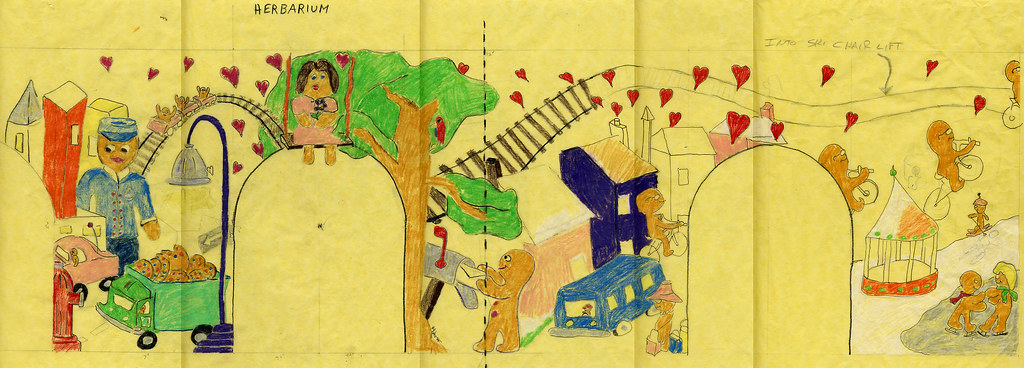 One aspect of our design was to have the gingerbread people look like they were occasionally popping out of the wall and existing in “our” space as well as having their own adventure. As it became a 3D reality, some things had to be reworked from the drawings because of the limitations of the physical space. The timeline was also very challenging: We started in early August and just kept plowing away at it until we installed it the week before Thanksgiving.
One aspect of our design was to have the gingerbread people look like they were occasionally popping out of the wall and existing in “our” space as well as having their own adventure. As it became a 3D reality, some things had to be reworked from the drawings because of the limitations of the physical space. The timeline was also very challenging: We started in early August and just kept plowing away at it until we installed it the week before Thanksgiving.
We completed the city scene first and then moved onto the country and farm scenes. Next came the gingerbread couple ice-skating under a cookie moon. But maybe I should stop there so I don’t give it all away. Jim and I were able to add pigment to caulk so we could “frost” the gingerbread people and make other objects look like big cookies. It was quite successful in that the gingerbread people and their world really do look good enough to eat. We wanted to have kids feel as if they walked into a fun-filled fantasy world and to light up their eyes and to spur their imaginations. We wanted a world that made them feel good. One little boy who visited made sure he said goodbye to all his gingerbread friends before he left the Adventure Garden. That was pretty nice.
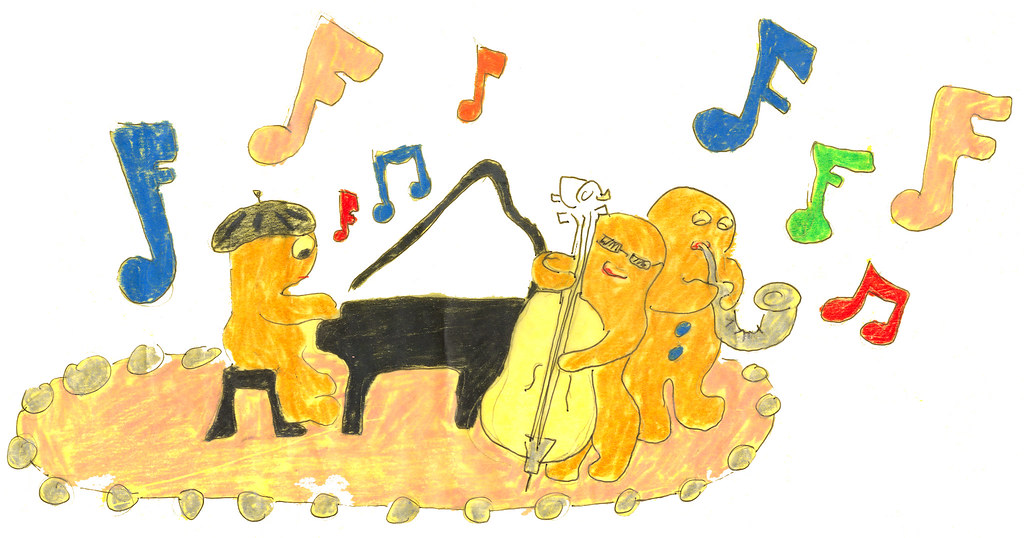 Gingerbread Town in Gingerbread Adventures is made from plywood, papier-mâché, and paint, and most importantly, a lot of imagination. Albert Einstein said “Logic will get you from A to B. Imagination will take you everywhere.” And I think that’s especially true with this undertaking, which was an adventure in itself. It started with just a few drawings and the belief that we could really transform the Discovery Center for the holiday season. Hopefully, everyone will enjoy their Gingerbread!
Gingerbread Town in Gingerbread Adventures is made from plywood, papier-mâché, and paint, and most importantly, a lot of imagination. Albert Einstein said “Logic will get you from A to B. Imagination will take you everywhere.” And I think that’s especially true with this undertaking, which was an adventure in itself. It started with just a few drawings and the belief that we could really transform the Discovery Center for the holiday season. Hopefully, everyone will enjoy their Gingerbread!
Check out Saturday’s programming.
Check out Sunday’s programming.
Posted in Programs and Events, Wildlife on November 7 2008, by Plant Talk
Has the Resident Pair Been Displaced by Youth?
 |
Debbie Becker leads a free bird walk at the Garden every Saturday from 11 a.m. to 12:30 p.m., beginning at the Reflecting Pool in the Leon Levy Visitor Center.
|
 Now that the trees are shedding their leaves, I’ve begun taking the weekly Bird Walk group through the Forest in hopes of seeing the resident great horned owls. Sure enough, a couple of weeks ago we discovered a large great horned owl (GHO) perched on a low branch.
Now that the trees are shedding their leaves, I’ve begun taking the weekly Bird Walk group through the Forest in hopes of seeing the resident great horned owls. Sure enough, a couple of weeks ago we discovered a large great horned owl (GHO) perched on a low branch.
At first we could not decided whether it was the adult male or the adult female of the regular pair. (The male is at left in the photo, taken last year during their courting phase.) Upon closer inspection we decided it was neither; it was one of their offspring. It has been months since the babies fledged the nest. So what was this immature owl still doing in the Forest? Great horned owls reach sexual maturity after two years, but their territoriality begins almost immediately after they learn to feed themselves.
Could it be that the mature male has reached the end of his reign as the only male owl in the Forest? He is, after all, more than 20 years old. That is a long life span for a wild owl (captive GHOs can live up to 30 years), although the owl pairs in Pelham Bay Park and Van Cortlandt Park have been breeding for almost the same amount of time. Human encroachment has given them a unique domain: The highways and complexes around our forests have created a closed habitat, ensuring enough food, safety from many predators, and a long life span.
The time comes for all creatures when they get too old to go on or they are pushed out by the next generation. Observing the younger owl in the Forest saddened me and the birders on the tour, as we know it could only mean one thing: Our resident great horned owls may be pushed out by a more vibrant male that will take over the Garden’s Forest and begin looking for his own mate. It is a somber time for the resident birders. We are all getting older and in danger of being replaced by someone fresher and younger. Sadly, to everything there is a season, even for the great horned owls of The New York Botanical Garden.
Join us on Saturdays at 11 a.m. to look for the great horned owls and other birds of the Garden.
Learn more about the Garden’s resident great horned owls after the jump.
Read More
Posted in People, Programs and Events, Shop/Book Reviews on November 5 2008, by Plant Talk
Love of Plants Is Natural for this Author
 John Suskewich is Book Manager for Shop in the Garden.
John Suskewich is Book Manager for Shop in the Garden.
 We’ve always wanted to salute the body of work of Ken Druse, one of our very best garden writers; so the upcoming release of his latest book, Planthropology, was all the trigger we needed to schedule a booksigning here at Shop in the Garden on November 8, from 2 to 4 p.m.
We’ve always wanted to salute the body of work of Ken Druse, one of our very best garden writers; so the upcoming release of his latest book, Planthropology, was all the trigger we needed to schedule a booksigning here at Shop in the Garden on November 8, from 2 to 4 p.m.
Through his lectures, journalism, books, and designs, Ken has advocated a style of gardening that combines the beautiful and the ecological in a unique and important way. Long before the concept of “green gardening” was born, he was emphasizing an earth-sensitive design and horticulture that has increased in relevance exponentially over the years. Look at the titles of his books as he created this template: The Natural Garden, The Natural Habitat Garden, The Natural Shade Garden. He makes his case with an elegant, accessible prose voice and his own beautiful photography.
Planthropology: The Myths, Mysteries, and Miracles of My Garden Favorites is more plant centered and personal than his previous books. It encompasses history, botany, folklore, horticulture, and medicine, and illustrates the concept behind the neologism with a series of stories about plants and explorers, scientists, neighbors, artists, lost relatives, obsessive-compulsives, insects, and the author himself. Some of the plants he studies are the poppy, dove tree, fig, orchid, daphne, ginkgo, and one of my current favorites, the lore-laden Franklinia.
He emphasizes the “plantyness” of gardening in this book, because I think he senses with some alarm that, as technology and culture develop, the bonds that have always tied people and nature together are being pressured and pulled and might snap permanently. Toward the end of the book, he refers to the metastasizing condition of “plant blindness.” He recalls in a story about a Victorian girl’s childhood that not so long ago kids encountered nature naturally, as part of their daily lives, but especially in their play. In other books he has recollected his own ’50s suburban youth of walking in the woods and finding plants and building forts in oak trees. (That you inevitably fell out of and scraped your elbow and your mother sprayed you with vermilion Mercurochrome.) How differently we grow up today! Instead of becoming a naturalist and writer, Thoreau could have been joined to a joystick playing Grand Theft Auto for hours on end.
The New York Botanical Garden is a plant museum with a mission, and that is to make sure we preserve and protect not just the physical world of plants, which we do through our programs of research and conservation, but also to show that love of nature (what the naturalist Edward O. Wilson calls biophilia) is a fundamental part of our humanity. And that we do through our visitor experience of which Shop in the Garden (all the staff here are proud to say) is very much a part. So it is fitting that we have our fellow plant lover Ken Druse and his new book Planthropology here this season. We look forward to seeing you when you come to meet him on November 8!
Posted in Kiku, Programs and Events on October 31 2008, by Plant Talk
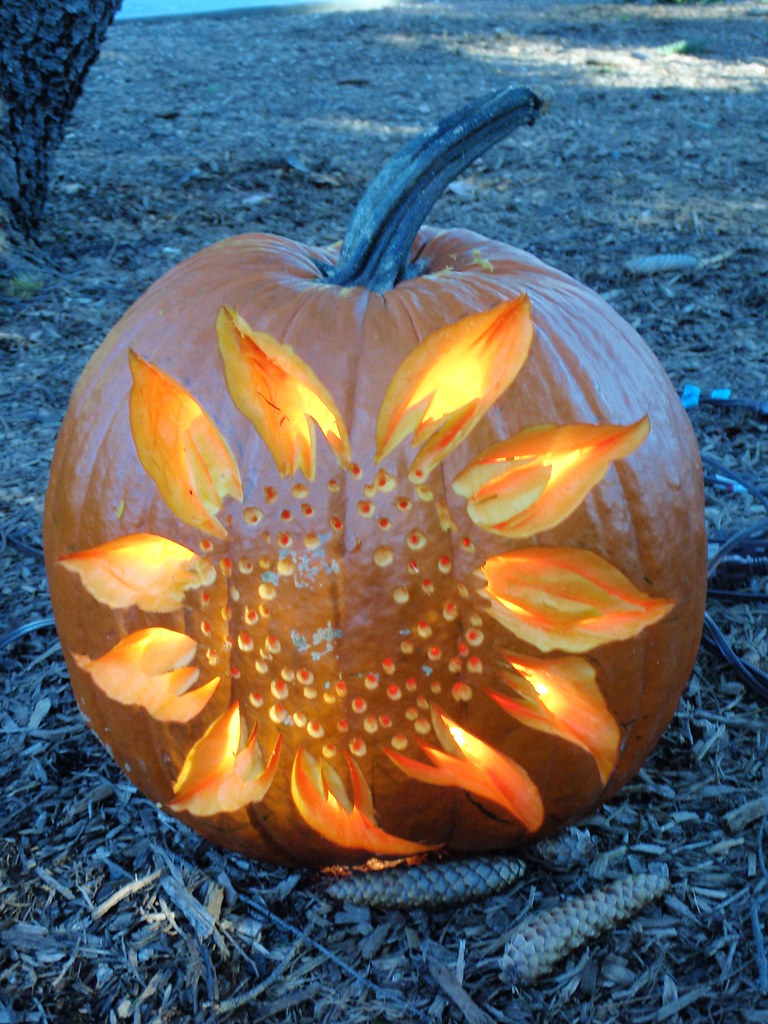

Last Sunday’s Halloween Hoorah at the Garden was a hit, as shown in these photos taken by Gayle Schmidt, Coordinator of Public Education. As children entered the Everett Children’s Adventure Garden, they turned a cotton ball and tissue into a ghost to hang in the Ghoulish Garden. And, of course, no Halloween celebration would be complete without a fancy jack-o-lantern, carved on the spot in the Benenson Ornamental Conifers.
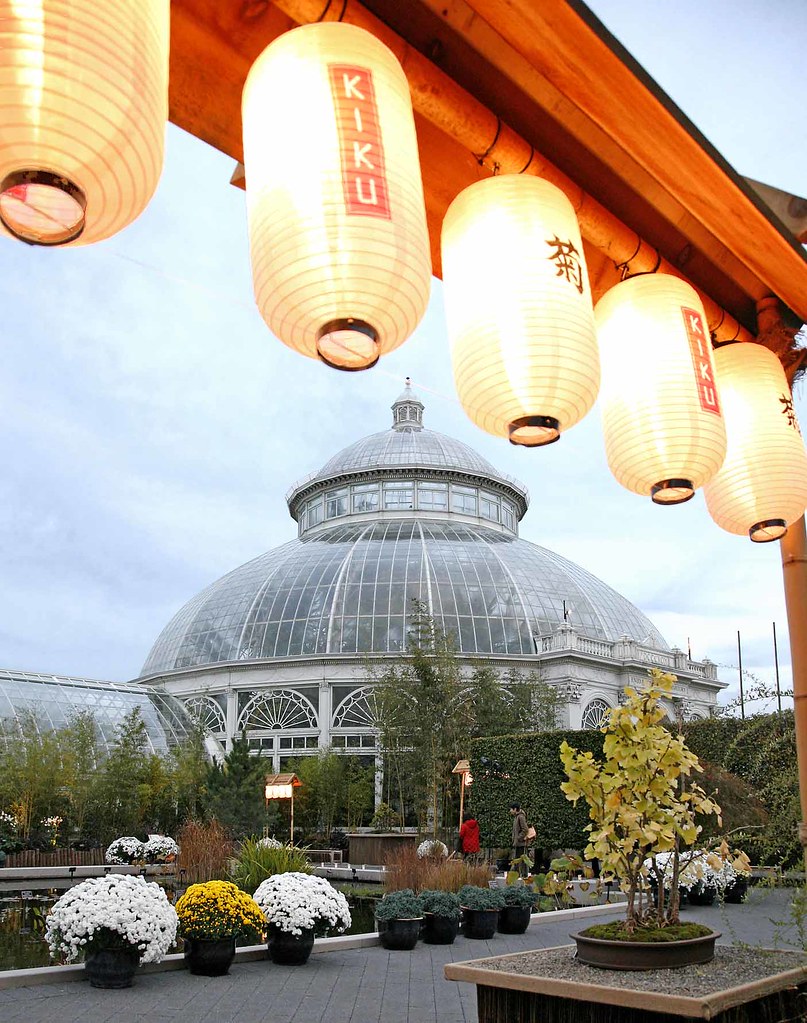 Looking for something fun to do this evening? Enjoy Kiku and Cocktails, viewing the exhibition Kiku: The Art of the Japanese Chrysanthemum beautifully lit and listening to a dramatic performance by Taiko Masala drummers.
Looking for something fun to do this evening? Enjoy Kiku and Cocktails, viewing the exhibition Kiku: The Art of the Japanese Chrysanthemum beautifully lit and listening to a dramatic performance by Taiko Masala drummers.
And if you’re searching for weekend ideas, click on the links below.
Check out Saturday’s programming.
Check out Sunday’s programming.

 When I talk about The New York Botanical Garden, one phrase I tend to repeat over and over is: “No matter what the weather is like outside, there is always something to see and do here, both indoors and out.” In addition to the beauty of the Garden’s grounds and living collections in every season, there are also great indoor attractions. One of my absolute favorites is located on the fourth floor of the Library building—the permanent exhibition Plants and Fungi: Ten Current Research Stories.
When I talk about The New York Botanical Garden, one phrase I tend to repeat over and over is: “No matter what the weather is like outside, there is always something to see and do here, both indoors and out.” In addition to the beauty of the Garden’s grounds and living collections in every season, there are also great indoor attractions. One of my absolute favorites is located on the fourth floor of the Library building—the permanent exhibition Plants and Fungi: Ten Current Research Stories. The rotunda features multiple displays illustrating the “William C. Steere Tradition,” with information on mosses, lichen, and three panels on mushrooms and berries. It educates the public on the legacy and influence of the man for whom the adjacent William and Lynda Steere Herbarium is named and where over 7 million plant and fungi specimens are archived. Computer terminals in the Gallery allow visitors to access the online specimen catalog from the C.V. Starr Virtual Herbarium.
The rotunda features multiple displays illustrating the “William C. Steere Tradition,” with information on mosses, lichen, and three panels on mushrooms and berries. It educates the public on the legacy and influence of the man for whom the adjacent William and Lynda Steere Herbarium is named and where over 7 million plant and fungi specimens are archived. Computer terminals in the Gallery allow visitors to access the online specimen catalog from the C.V. Starr Virtual Herbarium.



 On my second day as an intern with The New York Botanical Garden, I had the esteemed pleasure of meeting Sir Topham Hatt and Thomas the Tank Engine™ from the Island of Sodor (both of whom were much larger than I remembered from watching the television show as a child). The excitement was palpable as a growing number of fans arrived in the Arthur and Janet Ross Lecture Hall, the majority of whom toted small children anxious for the experience.
On my second day as an intern with The New York Botanical Garden, I had the esteemed pleasure of meeting Sir Topham Hatt and Thomas the Tank Engine™ from the Island of Sodor (both of whom were much larger than I remembered from watching the television show as a child). The excitement was palpable as a growing number of fans arrived in the Arthur and Janet Ross Lecture Hall, the majority of whom toted small children anxious for the experience.
 If someone had told me then that you could actually make a career out of climbing trees, I would have said, “Where do I sign up?” And now, when I speak with passionate recreational gardeners about the frustrating shortage of skilled horticulturists, many respond with similar wide-eyed surprise: “You mean I could do this for a living?”
If someone had told me then that you could actually make a career out of climbing trees, I would have said, “Where do I sign up?” And now, when I speak with passionate recreational gardeners about the frustrating shortage of skilled horticulturists, many respond with similar wide-eyed surprise: “You mean I could do this for a living?”







 We’ve always wanted to salute the body of work of Ken Druse, one of our very best garden writers; so the upcoming release of his latest book, Planthropology, was all the trigger we needed to schedule
We’ve always wanted to salute the body of work of Ken Druse, one of our very best garden writers; so the upcoming release of his latest book, Planthropology, was all the trigger we needed to schedule 

